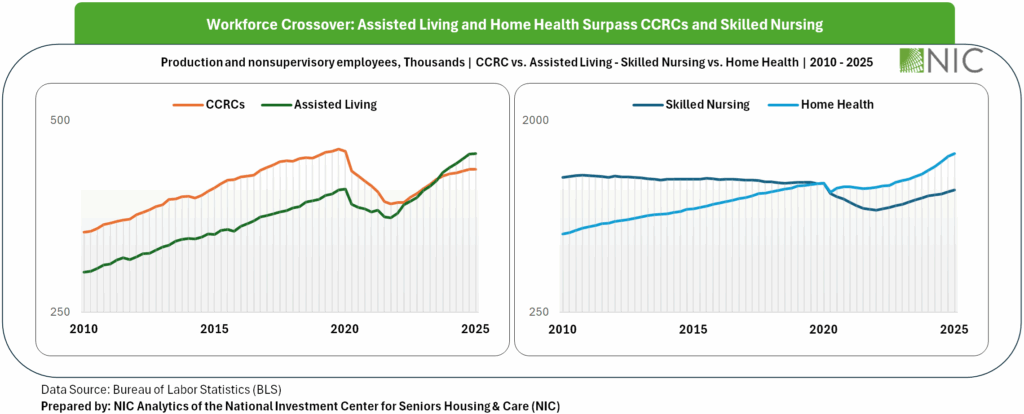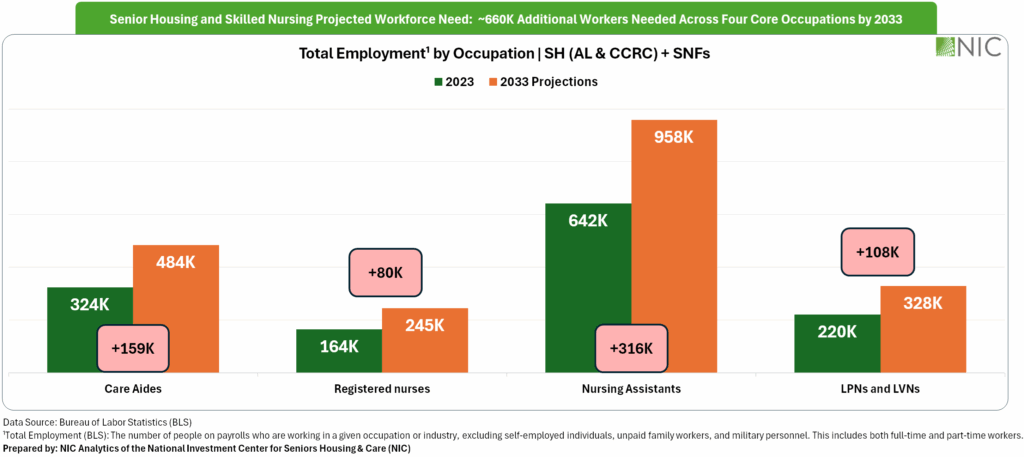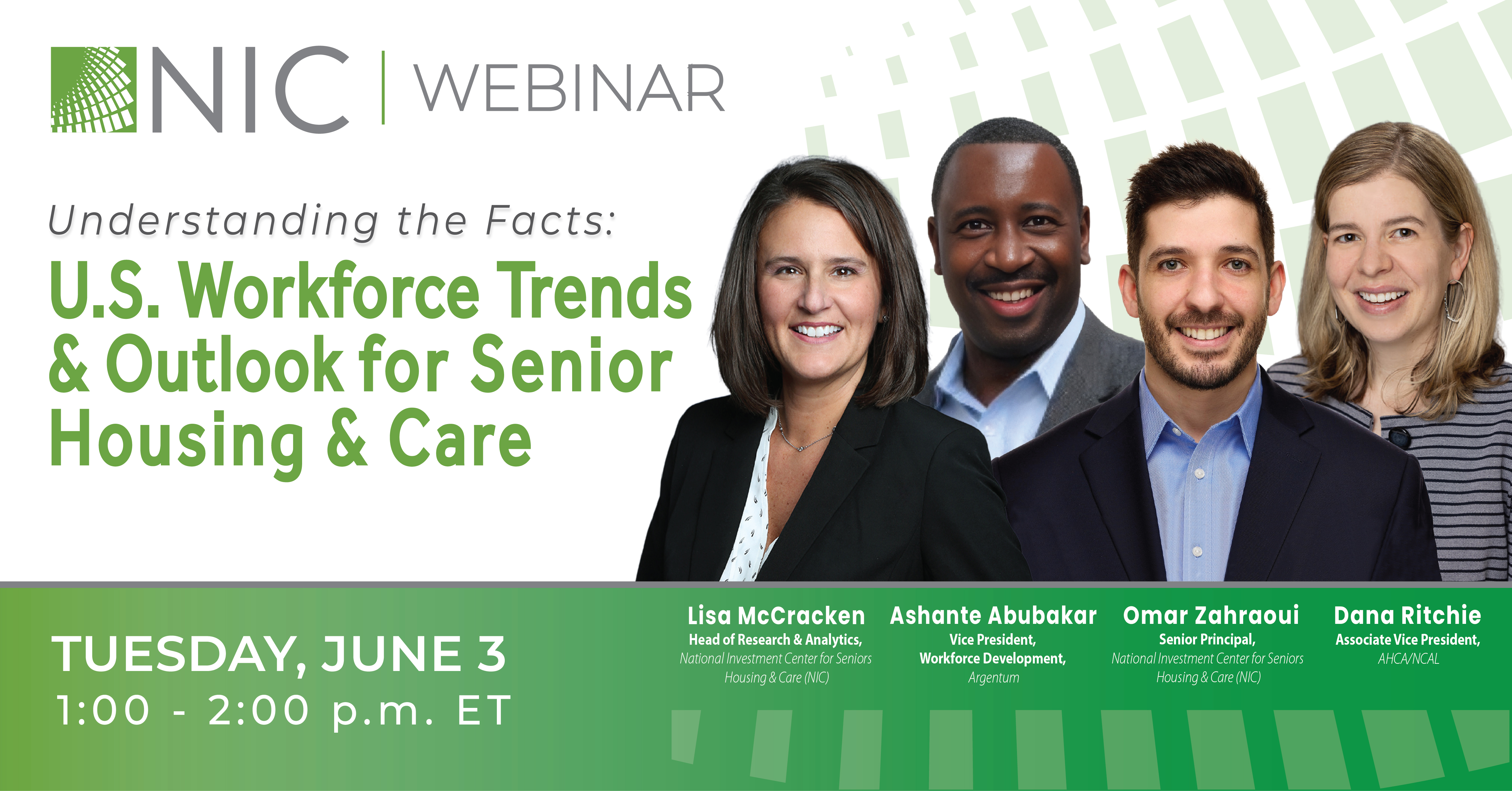Workforce challenges in senior housing and care are not simply operational hurdles but are long-term signals of broader shifts across the entire care economy. Both residents and staff are central to the success equation.
NIC recently kicked off a webinar series focused on one of the most pressing challenges facing the senior housing and care industry: the workforce.
As part of the first webinar, hosted on June 3rd, NIC Analytics shared data-informed insights showing how workforce dynamics are changing in senior housing and skilled nursing. From shifts in employment across care settings to the projected need for hundreds of thousands of new direct care workers, the numbers tell a powerful story.
This article highlights the top takeaways from that session, insights that point not only to the scale of the challenge but to the opportunity to rethink job design, attract new talent, and build a more resilient workforce model for the decade ahead.
Key Takeaways:
- For the first time, assisted living has surpassed CCRCs and home health has overtaken skilled nursing in the total workforce of production and nonsupervisory employees. CCRCs and skilled nursing still have not returned to pre-pandemic workforce levels, while their adjacent counterparts have not only recovered but expanded.

- More than half of the workforce in the senior housing and skilled nursing sectors is made up of four care roles (care aides, nursing assistants, LPNs/LVNs, and RNs), making staffing models highly dependent on healthcare-specific roles.
- Senior housing and care competes with multiple sectors for the same talent but holds a smaller share of the national workforce. The top occupations in senior housing and nursing care are also in high demand in home health, individual and family services, and hospitals.
- Over 87% of these four care roles are women, and more than half are mothers with children under 18, highlighting the central role of family dynamics in staffing stability.
- There is a potential untapped opportunity to engage more men in caregiving roles. Given the decline in male workforce participation, senior housing and nursing care can design new pathways to attract and retain men in care roles, an underutilized labor pool in the space.
- Workforce demand is rising faster than population growth. While the U.S. population is projected to grow just 4% by 2033, the 75+ population and senior care resident base are expected to grow nearly 50%. By 2033, the U.S. will need 660,000 more workers in just four core roles – care aides, RNs, LPNs/LVNs, and nursing assistants – to meet projected senior housing and skilled nursing demand.

- While wages in senior housing and care have generally remained competitive with adjacent healthcare sectors, long-term workforce growth is not just about pay. However, rising wages, especially since 2021, have tightened margins especially for high acuity settings.
- Senior housing is well-positioned to lead. Compared to institutional healthcare, senior housing has more flexibility to pilot new scheduling models, part-time pathways, or hybrid roles, appealing to caregivers, mothers, men, and older workers.
- Automation is not a full solution, but it is part of the answer. AI and technology cannot replace hands-on care, but they can improve efficiency, reduce burnout, and allow staff to focus on residents, not paperwork.
- The future will not be built on higher pay alone, it will be built on better work. The opportunity ahead is not just to compete for talent, but to redefine what it means to build and belong to a senior housing and care workforce, invest in fast-track training pipelines, and create the kinds of jobs people want to stay in.
Thanks again to everyone who joined the webinar, and to my fellow speakers – Lisa McCracken, Head of Research & Analytics, NIC, Dana Ritchie, Associate Vice President, AHCA/NCAL, Ashante Abubakar, Vice President of Workforce Development, Argentum – for a great discussion.
Watch the full webinar replay here. Download the slide deck here for more insights and data.
